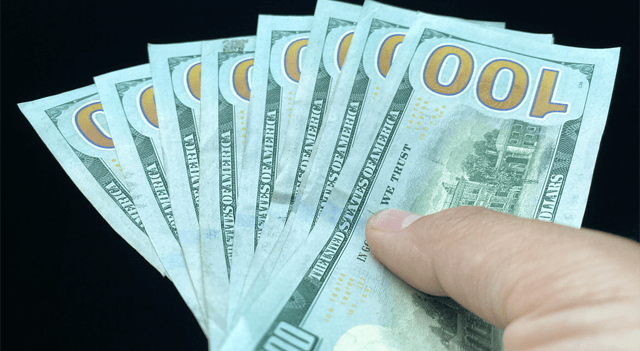The U.S. dollar eased a bit on Wednesday, giving back some gains from earlier in the week as markets awaited the Federal Reserve’s upcoming policy decision. At the same time, the euro is positioned to log its first monthly loss of the year.
The Dollar Index, which tracks the greenback against six major currencies, was down 0.1% to 98.542 at 03:00 ET (08:00 GMT), staying near a one-month high and on pace for its first monthly gain in 2025.
Fed Meeting Nears End
The dollar’s strength this month has been fueled by the U.S.-EU trade deal, portfolio repositioning, and month-end flows. But analysts at ING noted that “these factors should start to fade now, shifting all the attention to data and the Fed.” They added, “Before diving into the U.S. calendar, it’s worth noting that the positioning squeeze means the dollar is in a less oversold position and therefore faces more balanced risks.”
Investors are awaiting the conclusion of the Federal Reserve’s two-day meeting, where rates are expected to remain unchanged. Chair Jerome Powell’s remarks will be closely watched for hints about the future course of policy, especially amid ongoing calls from President Donald Trump for rate cuts.
Tuesday’s data showed a decline in U.S. job openings and hiring for June, signaling a potential slowdown in labor market activity ahead of Friday’s crucial jobs report. Markets will also digest July private payroll data and a preliminary reading on second-quarter GDP later Wednesday. Economists forecast the economy rebounding with 2.5% growth in Q2 after shrinking 0.5% in Q1.
Euro Struggles as Monthly Loss Looms
The euro gained 0.1% against the dollar to 1.1553, just above a one-month low set in the previous session, but remains on track for its first monthly decline this year. Despite an 11% rally earlier in 2025, largely due to dollar weakness amid Trump’s erratic trade policies, the euro now faces growing challenges.
Investors await the flash eurozone Q2 growth estimate, which will inform expectations around the European Central Bank’s interest rate decisions. Recent data showed France’s economy expanded 0.3% in the quarter, beating forecasts thanks to a rebound in household spending, while Germany’s economy contracted 0.1%.
Overall, the eurozone is expected to report no growth for Q2 as the positive export momentum from Q1 fades. ING analysts said, “The stark divergence in growth news between the US and Europe should underpin EUR/USD bearish momentum in our view, and there is a good chance of a break below 1.150.”
Sterling edged up 0.1% to 1.3363, trading just above a two-month low.
Focus on BOJ Decision
USD/JPY fell 0.4% to 147.87 after recent sharp gains, with eyes now on the Bank of Japan’s meeting on Thursday. The BOJ is widely expected to keep rates steady and maintain a cautious stance amid economic uncertainties and political changes.
AUD/USD slipped 0.1% to 0.6510 following slightly softer-than-expected inflation data for Q2. Inflation eased further from the prior quarter, with core inflation within the Reserve Bank of Australia’s 2%-3% target band. June’s monthly CPI also showed a larger-than-expected decline. These softer readings give the RBA more room to consider rate cuts after it unexpectedly held rates in July.
The USD/CNY pair ticked down slightly to 7.1764 as traders await Thursday’s PMI report, which may show improvement following recent easing in trade tensions between the U.S. and China.
This content is for informational purposes only and does not constitute financial, investment, or other professional advice. It should not be considered a recommendation to buy or sell any securities or financial instruments. All investments involve risk, including the potential loss of principal. Past performance is not indicative of future results. You should conduct your own research and consult with a qualified financial advisor before making any investment decisions.
